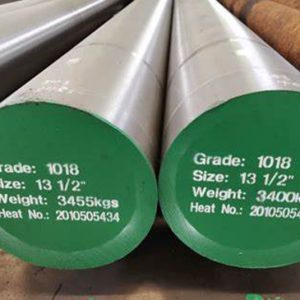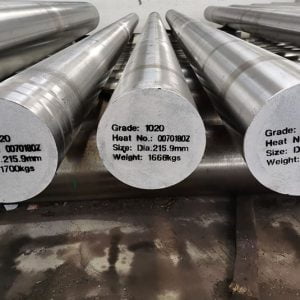Introduction
The weldability of steel is a crucial factor in many industries, from construction and manufacturing to automotive and aerospace. Understanding the properties and techniques associated with welding steel can significantly impact the strength, durability, and quality of your projects. In this comprehensive guide, we will delve into the factors affecting the weldability of steel, explore various techniques, and provide practical tips to ensure successful welding outcomes.
Understanding the Weldability of Steel

What is Weldability?
Weldability, also known as weldability, refers to the ability of a material to be welded under specified conditions to form a joint that meets the desired service requirements. For steel, this involves understanding its composition, mechanical properties, and the effects of welding on these properties.
Factors Affecting the Weldability of Steel
Several factors influence the weldability of steel, including its chemical composition, microstructure, and mechanical properties. Key elements such as carbon, manganese, sulfur, and phosphorus can significantly impact the weldability of steel. For instance, high carbon content can make steel more brittle and prone to cracking during welding.
Types of Steel and Their Weldability
Different types of steel have varying weldability characteristics. These include:
- Carbon Steel: Generally has good weldability, but high carbon content can lead to brittleness.
- Alloy Steel: The presence of alloying elements like chromium, nickel, and molybdenum can enhance or reduce weldability.
- Stainless Steel: Typically has good weldability but requires special techniques to prevent corrosion and maintain mechanical properties.
- Tool Steel: Known for its hardness and resistance, tool steel can be challenging to weld without preheating and post-weld heat treatment.
Techniques for Welding Steel
Shielded Metal Arc Welding (SMAW)
SMAW, also known as stick welding, is a versatile and widely used technique for welding steel. It is suitable for both thick and thin sections of steel and is effective in various positions and environments.
Gas Metal Arc Welding (GMAW)
GMAW, commonly referred to as MIG welding, uses a continuous wire feed as an electrode and shielding gas to protect the weld pool. It is ideal for welding thin sections of steel and offers high welding speeds and good control over the weld bead.
Gas Tungsten Arc Welding (GTAW)
GTAW, or TIG welding, uses a non-consumable tungsten electrode and is known for producing high-quality, precise welds. It is particularly useful for welding stainless steel and thin sections of steel where control over the weld pool is crucial.
Flux-Cored Arc Welding (FCAW)
FCAW is similar to GMAW but uses a tubular wire filled with flux. It is suitable for welding thicker sections of steel and provides deep penetration, making it ideal for heavy-duty applications.
Submerged Arc Welding (SAW)
SAW is an automated process where the weld is submerged under a blanket of granular flux. It is highly efficient and produces high-quality welds with minimal spatter, making it suitable for large, long welds on thick steel sections.
Practical Tips for Improving the Weldability of Steel
Pre-Welding Preparations
Proper preparation is crucial for successful welding. This includes cleaning the steel surface to remove contaminants, choosing the right electrode or filler material, and setting the correct welding parameters.
Controlling Heat Input
Managing heat input is essential to prevent issues like warping, distortion, and cracking. Use controlled welding speeds and appropriate preheating and post-weld heat treatment techniques to maintain the integrity of the weld.
Dealing with Common Welding Defects
Understanding and addressing common welding defects such as porosity, cracks, and incomplete fusion can significantly improve the weldability of steel. Regular inspection and adherence to best practices are key to minimizing these issues.
Case Study: Weldability of Steel in Construction Projects
In this section, we present a case study that highlights the application of welding techniques in a construction project. The project involves the fabrication and assembly of steel structures for a commercial building. The key focus is on ensuring the structural integrity and safety of the welds.
Project Overview
The construction project required welding various steel components, including beams, columns, and braces. The primary welding methods used were SMAW and GMAW, selected for their suitability for different steel sections and positions.
Challenges and Solutions
- Challenge: Welding thick sections of high-carbon steel prone to cracking.
Solution: Preheating the steel to a specific temperature and using a low-hydrogen electrode to minimize the risk of cracking. - Challenge: Maintaining weld quality in an outdoor environment with varying weather conditions.
Solution: Implementing proper shielding techniques and using portable shelters to protect the weld area from wind and moisture.
Results
The project was completed successfully, with all welds meeting the required structural and safety standards. The use of appropriate welding techniques and thorough quality control ensured the durability and reliability of the steel structures.
Comparative Analysis of Weldability of Different Steel Types

The following table provides a comparative analysis of the weldability of various steel types, highlighting their key characteristics and welding considerations.
| Steel Type | Weldability | Key Characteristics | Welding Considerations |
|---|---|---|---|
| Carbon Steel | Good | Versatile, widely used | Manage carbon content to prevent brittleness |
| Alloy Steel | Varies | Enhanced properties with alloying elements | Adjust techniques based on specific alloys |
| Stainless Steel | Good | Corrosion-resistant, durable | Prevent contamination, control heat input |
| Tool Steel | Moderate to Poor | Hard, wear-resistant | Requires preheating, controlled cooling |
| High-Strength Steel | Moderate | High tensile strength | Use low-hydrogen electrodes, control heat |
Conclusion: Weldability of Steel
The weldability of steel is a complex but essential aspect of various industrial applications. By understanding the factors affecting weldability, selecting appropriate welding techniques, and adhering to best practices, you can achieve high-quality, durable welds. Whether you are working with carbon steel, alloy steel, or stainless steel, this guide provides the knowledge and insights needed to enhance your welding projects.
FAQ
What is the most weldable type of steel?
Carbon steel is generally considered the most weldable type of steel due to its balanced composition and wide availability.
How does carbon content affect the weldability of steel?
High carbon content can make steel more brittle and prone to cracking during welding. Controlling carbon content and using appropriate welding techniques can mitigate these issues.
Can stainless steel be welded easily?
Yes, stainless steel can be welded easily, but it requires specific techniques to prevent contamination and maintain its corrosion-resistant properties.
What are common welding defects in steel?
Common welding defects in steel include porosity, cracks, incomplete fusion, and distortion. Proper preparation and control of welding parameters can help minimize these defects.
How important is preheating in welding steel?
Preheating is crucial for welding certain types of steel, particularly those with high carbon content or alloying elements, as it helps prevent cracking and other issues.
What is the role of shielding gas in welding steel?
Shielding gas protects the weld pool from atmospheric contamination, ensuring a clean and strong weld. The type of shielding gas used can vary based on the welding process and steel type.
Can tool steel be welded?
Tool steel can be welded, but it requires specific techniques such as preheating and controlled cooling to prevent cracking and maintain its properties.
How do I choose the right electrode for welding steel?
Choosing the right electrode depends on the type of steel, welding process, and desired weld properties. Consult the manufacturer’s guidelines and consider the specific requirements of your project.
What is the impact of welding on the mechanical properties of steel?
Welding can alter the mechanical properties of steel, such as strength and toughness. Proper welding techniques and post-weld heat treatment can help maintain these properties.
How do I prevent warping and distortion in welded steel structures?
Controlling heat input, using proper welding sequences, and applying clamps and fixtures can help prevent warping and distortion in welded steel structures.









